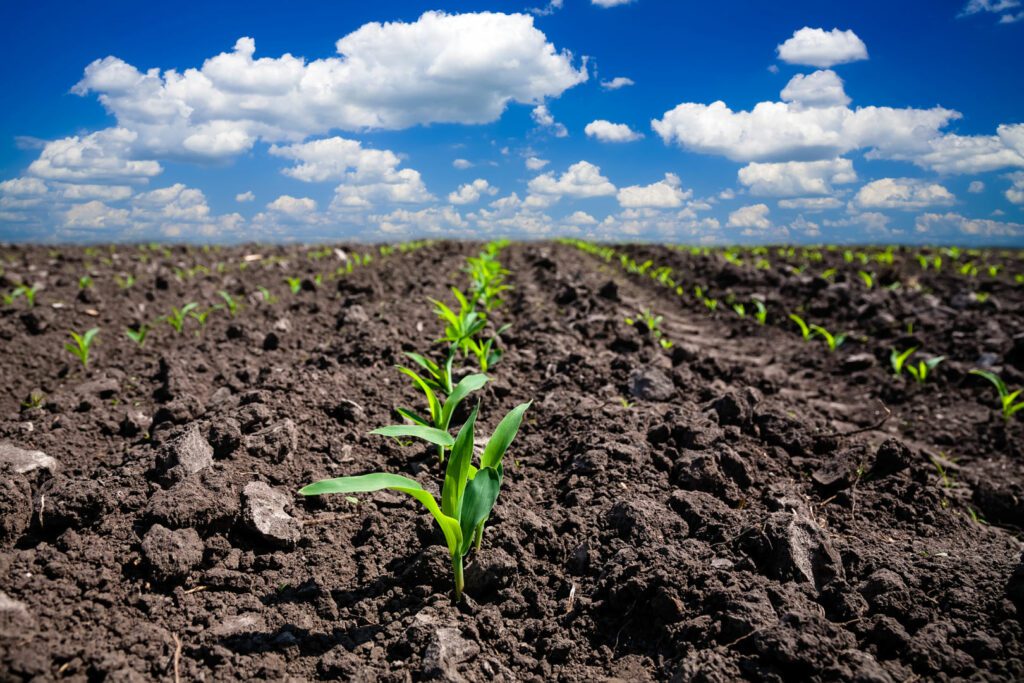Soil testing has become a fundamental best management practice in crop production. The knowledge provided by these tests allows growers to apply the exact amount of nutrients needed in each field, helping avoid over or under application of valuable crop inputs. In this Q&A, we sat down with Midwestern BioAg’s lead soil technician, Andrew Cory, to learn more about the benefits of soil sampling and the services available to Midwestern BioAg customers.
What soil sampling services are available?
Midwestern BioAg offers both grid and non-grid soil sampling services at all our locations. Grid samples are taken from 2.5-acre grids; non-grid samples, or composite samples, are taken from 5- to 20-acre parcels. We also offer nutrient management sampling, which helps farmers abide by their nutrient management plans. Nutrient management plans (NMP) cannot be written by Midwestern BioAg staff at this time, but our NMP samples provide the minimum amount of knowledge needed to comply with NMP requirements at a lower cost than our standard tests.
How are Midwestern BioAg soil tests different from traditional P-K and pH tests?
At Midwestern BioAg, we go beyond the standard P-K and pH soil tests. We conduct comprehensive secondary and trace mineral analyses to identify yield-limiting factors. These are the soil conditions that stop a plant from producing yields that match its genetic potential — a deficiency in just one trace mineral can have this effect. Our tests also track important factors like cation exchange capacity and organic matter.
Why should I sample with Midwestern BioAg?
We provide a complete program based on the soil samples we take. Growers who sample with us get a comprehensive look at what’s in their soil, an experienced sales consultant to help assist in interpreting that data, and access to specific variable rate technology (VRT) fertilizer recommendations. We also have the equipment and staff available to help you precisely apply fertilizer as well.
What is grid sampling? How is it beneficial?
Grid sampling is a type of soil sampling that places sample locations on a gridded map. This type of sampling is typically done for growers who are data driven, want the most accurate placement of fertilizer, and want to use VRT fertilizer application.
This precise approach can benefit growers year after year because the same sample site locations are stored using a handheld tablet, which allows the soil technician to retake samples at the same spots as previous years. This helps continually target deficient areas while tracking the progress of soil nutrients. Data can also be plotted against yield maps to show direct return from your program. This can be especially helpful in fine-tuning soil and crop management.
Do you also offer nitrate testing?
We do provide nitrate testing. This test is generally conducted seasonally on corn ground to help growers determine total available nitrogen. When testing for nitrates, we need to take deeper samples (1 to 2 feet) than what is typical, so these must be collected and analyzed separately.
What documents come with my sample results?
Soil sample results include field maps of sample locations, colored maps showing nutrient deviation from sample to sample (if grid sampled), and fertilizer recommendations from our staff.
How can sample data be used with VRT?
Variable rate technology can be used with our floater applicators to conduct more accurate placement of fertilizer. This is done by generating a fertilizer prescription based on grid sampling data. VRT prescriptions use equation-based analysis within our software program to achieve the correct amount and placement of fertilizer.
Are sampling services available at all locations?
Our team of soil technicians can sample farms throughout our complete service area. We currently have three staff soil technicians at our Michigan, Illinois and Blue Mounds, Wisconsin, facilities.
Midwestern BioAg uses utility vehicles (UTVs) for sampling. How do these work?
Our UTVs are mounted with hydraulic soil probes powered by small Honda motors. These units have the capability to pull samples at a much faster pace than hand-collected samples and also at a consistent sampling depth.
How does soil sampling improve efficiency?
The return on investment from soil sampling can be significant. After taking that sample, you’ll be able to determine what nutrients you need, how much to apply, and where to place that fertilizer. This is a more efficient means of spending money then by purchasing a standard fertilizer and applying it throughout the field without a specific goal. With a soil test, you will be spending money on nutrients only where they are needed, applying the correct amounts and increasing the chances of achieving higher yields because of this knowledge-based approach.
For more information on sampling services, contact your local Midwestern BioAg facility. To learn more about soil fertility, go to www.midwesternbioag.com/soil-guide_2016_web.

